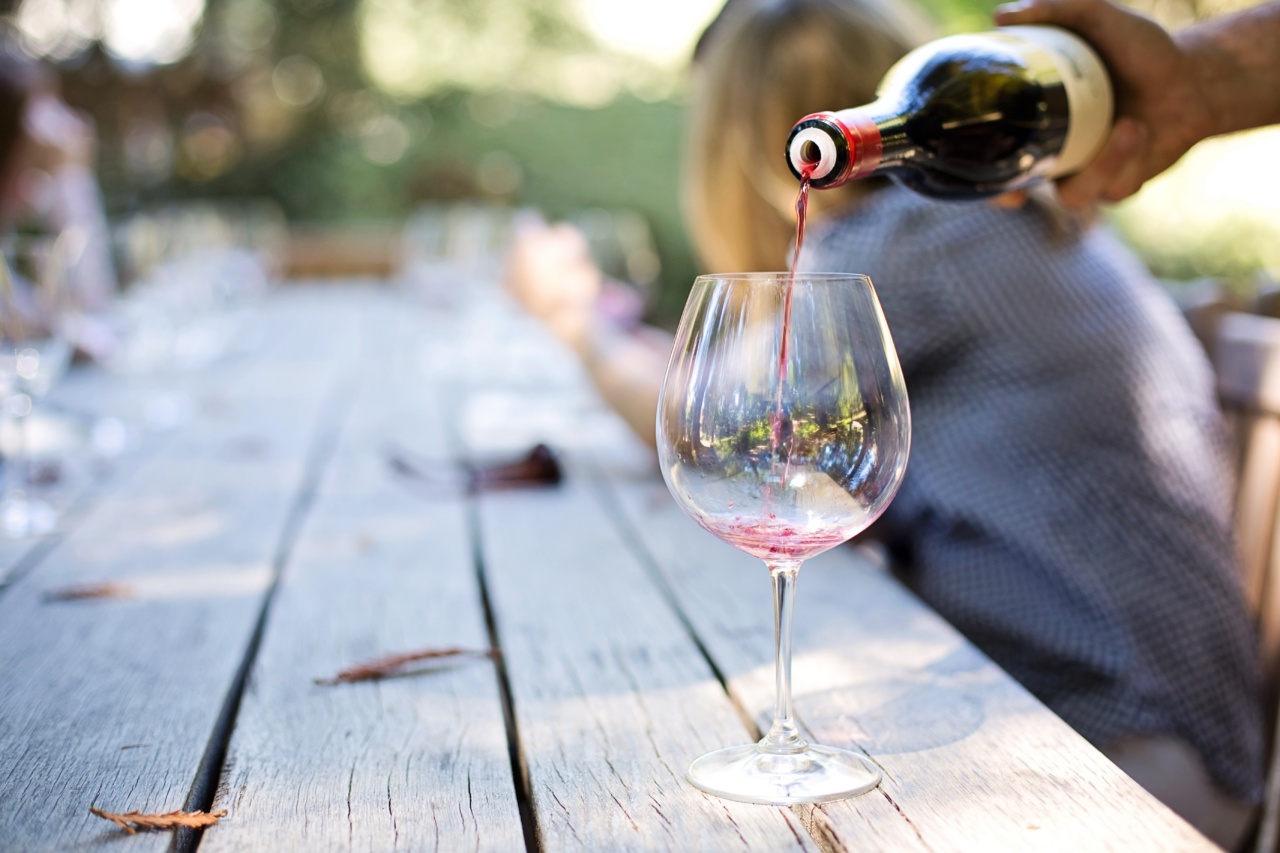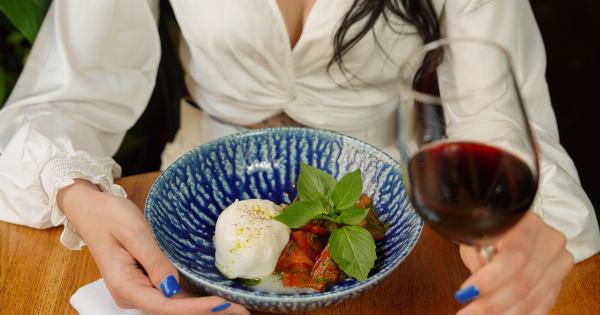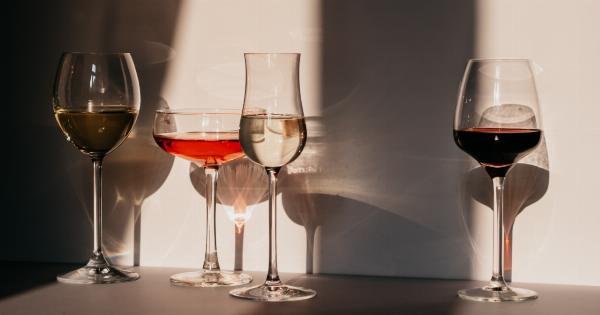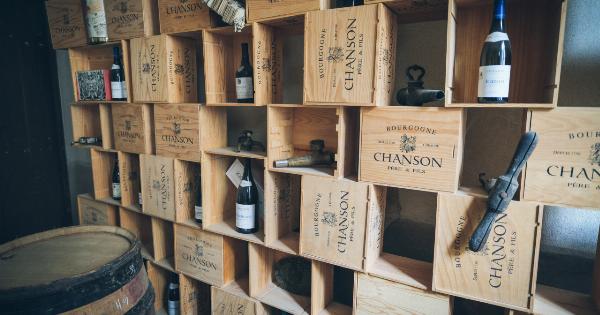Wine tasting is a delightful experience that allows you to explore the wonderful world of wine.
Whether you are a wine enthusiast or a beginner, understanding the basics of wine tasting can enhance your enjoyment and appreciation of this ancient beverage. In this guide, we will introduce you to the art of wine tasting and provide you with essential tips to help you get started on your wine journey.
The Five S’s of Wine Tasting
Before we delve into the specifics of wine tasting, it’s important to familiarize yourself with the five S’s of wine tasting:.
- See: Begin by observing the appearance of the wine. Pay attention to its color, clarity, and viscosity. Hold the glass up to the light to better appreciate its characteristics.
- Swirl: Gently swirl the wine in your glass to release its aromas, also known as nosing. This action helps to oxygenate the wine and release its fragrance.
- Smell: Bring the glass close to your nose and take a deep sniff. Try to identify the various scents and aromas present in the wine. This step helps to prepare your palate for the flavors to come.
- Sip: Take a small sip of the wine and let it linger in your mouth for a few seconds. Pay attention to the taste, texture, and mouthfeel. Allow the flavors to unfold and take note of your impressions.
- Savor: Finally, savor the wine by paying attention to its aftertaste or finish. Note how long the flavors linger on your palate.
Wine Tasting Tools
While you can certainly enjoy wine without any special tools, having a few essentials can enhance your wine tasting experience. Here are some tools commonly used by wine enthusiasts:.
- Glassware: Invest in a set of wine glasses specifically designed for different types of wine. The shape and size of the glasses can greatly impact the wine’s aromas and flavors.
- Decanter: A decanter is useful for aerating young wines and allowing them to breathe, enhancing their flavors and aromas.
- Corkscrew: Choose a sturdy corkscrew that allows you to effortlessly open wine bottles without damaging the cork.
- Wine Bottle Stopper: This tool helps to preserve the wine’s freshness after it has been opened.
- Wine Cooler: A wine cooler or refrigerator can help you keep your wines at the ideal serving temperature.
Types of Wine Tasting
Wine tasting can be approached in various ways, depending on your preferences and goals. Here are four common types of wine tasting:.
1. Comparative Tasting
In comparative tasting, you taste and compare different wines side by side. This allows you to analyze the differences and similarities between wines from the same region, varietal, or vintage.
It’s an excellent way to train your palate and develop your wine knowledge.
2. Vertical Tasting
Vertical tasting involves tasting different vintages of the same wine. This allows you to explore how the characteristics of a particular wine evolve over time. It’s a fascinating experience that showcases the impact of aging on wine.
3. Horizontal Tasting
Horizontal tasting involves sampling wines from the same vintage but different producers or regions. This type of tasting helps you understand the influence of winemaking techniques and terroir on the final product.
4. Blind Tasting
In blind tasting, the wines are served without revealing their identities. This type of tasting challenges your ability to assess a wine solely based on its sensory characteristics, without any preconceived notions.
Developing Your Wine Palate
Training your palate is an ongoing process that requires practice and exposure to various wines. Here are a few tips to help you develop your wine palate:.
- Taste Different Varietals: Explore wines made from different grape varietals such as Cabernet Sauvignon, Chardonnay, Pinot Noir, and Sauvignon Blanc. This allows you to understand the unique characteristics of each varietal.
- Try Wines from Different Regions: Each wine region has its own distinct terroir, which influences the flavor profile of the wines. Taste wines from various regions to appreciate the diversity in styles.
- Attend Wine Tasting Events: Wine tasting events offer an opportunity to taste a wide range of wines in a structured setting. Take advantage of these events to expand your wine knowledge and interact with other wine enthusiasts.
- Take Notes: Keep a wine journal to jot down your tasting notes and impressions. Over time, this will help you identify your preferences and track your wine journey.
Common Wine Tasting Terms
As you delve deeper into the world of wine tasting, you will come across various terms used to describe wine characteristics. Here are some common wine tasting terms:.
- Acidity: The level of tartness or sourness in a wine.
- Tannins: Compounds found in grape skins and seeds that create a drying sensation in the mouth.
- Body: The weight and texture of the wine in the mouth, ranging from light-bodied to full-bodied.
- Finish: The lingering taste and sensation after swallowing the wine.
- Aroma: The scents and fragrances perceived in the wine.
- Flavor: The overall taste profile of the wine, including the primary, secondary, and tertiary flavors.
Conclusion
Wine tasting is a journey of discovery that allows you to explore the complexities and nuances of this beloved beverage.
By following the five S’s of wine tasting, using the right tools, and experimenting with different wines, you can develop your palate and enhance your enjoyment of wine. Remember, wine tasting is subjective, and there are no right or wrong answers. It’s all about finding the wines that please your senses and bring you joy. Cheers!.






























